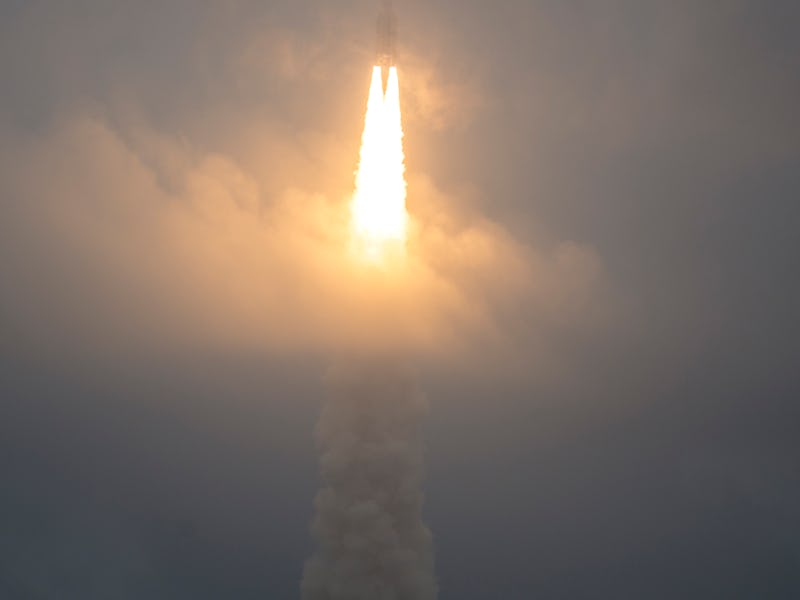Look: Astronomers capture the James Webb Telescope on the journey to deep space
The telescope is about 1 million kilometers away from Earth.

The prying eyes of an earthly observatory caught the largest space telescope ever built making its way to its cosmic perch where it will be looking back at the ancient universe.
The Virtual Telescope Project captured a mesmerizing image of NASA’s James Webb Space Telescope (JWST) during its journey to deep space. The telescope is currently around 711,000 miles away from Earth, almost 80 percent of the way to its destination.
JWST launched on December 25, 2021, with the unprecedented task of seeing a time and space that has never been observed before. The 21-foot wide telescope needs to go beyond Earth to do that. James Webb’s final destination is a gravitationally stable point called Lagrangian point 2 (L2), where the Sun and Earth’s gravity are canceled out. That journey will take the telescope about a month in total.
On Saturday, the Virtual Telescope Project released a new image of JWST in deep space.
JWST was spotted making its way to its L2 cosmic perch.
The telescope has been tracking JWST’s journey through space, detecting its motion as it cruised through the cosmos. When the Virtual Telescope Project captured the image, JWST was about 620,000 miles from Earth. That’s about 2.6 times the distance between Earth and the Moon, which is about 238,000 miles. The first of two of the Webb telescope’s primary wings had already been deployed.
This short animation reveals the tiny speck that is the JWST making its way through deep space.
About James Webb Space Telescope — The telescope sports a 21-foot-wide, 4-inch-thick tiling of 18 beryllium mirrors coated in gold, acting as one large mirror. Webb’s large mirror and its position outside of Earth’s influence allow it to observe distant objects in the universe better than any other instrument in the world.
JWST will probe the atmospheres of potentially habitable exoplanets, peer back in time at galaxies that formed during the early years of the universe, and investigate Solar System moons that may have some form of life in their subsurface oceans.
The L2 orbit ensures that it can stay facing away from the Sun at all points, protecting itself against the light and heat of the star. It also keeps the telescope out of the shadows of both the Earth and Moon, allowing it to have an unobstructed view of the universe for the entire duration of its orbit. Meanwhile, Hubble goes in and out of Earth’s shadow every 90 minutes. Once the telescope reaches orbit, the mission team on the ground will double-check its instruments to make sure it’s working correctly, which will take a few months.
JWST will fully begin operations around mid-summer of the year 2022.